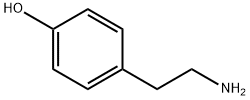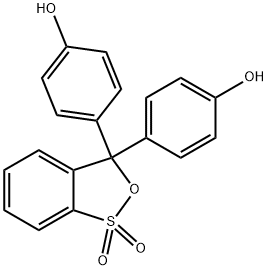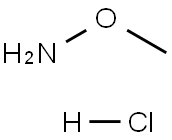Tyramine hydrochloride
Synonym(s):4-(2-Aminoethyl)phenol hydrochloride;4-Hydroxyphenethylamine hydrochloride;Tyrosamine hydrochloride
- CAS NO.:60-19-5
- Empirical Formula: C8H12ClNO
- Molecular Weight: 173.64
- MDL number: MFCD00012901
- EINECS: 200-462-5
- SAFETY DATA SHEET (SDS)
- Update Date: 2024-12-18 14:15:30

What is Tyramine hydrochloride?
Chemical properties
Off-White to Light Yellow Powder
Occurrence
Tyramine was originally a compound isolated from ergot alkaloids and decaying animal tissue. It has pharmacological effects such as increasing blood pressure and exciting the uterus.
The Uses of Tyramine hydrochloride
Tyramine hydrochloride is a sympathomimetic, the hydrochloride salt of the naturally-occurring monoamine derived from the amino acid tyrosine. Tyramine acts as a catecholamine releasing agent but cannot cross the blood-brain barrier. Tyramine hydrochloride is an amino acid that helps regulate blood pressure. Tyramine hydrochloride occurs naturally in the body, and it's found in certain foods.
What are the applications of Application
Tyramine Hydrochloride is a naturally occurring monoamine derived from tyrosine
What are the applications of Application
Tyramine hydrochloride (T-HCl) is a kind of fluorogenic substrate of peroxidase. It is a naturally occurring monoamine derived from tyrosine. Tyramine Hydrochloride has been used:
coinfused with adenosine in control subjects and patients in order to reduce leg blood flow by 50% without affecting arterial blood pressure.
labelled with fluorescence dyes (Atto 488 and Atto 655) to serve as a substrate for peroxidase in immunofluorescence analysis.
used in dimethylformamide, labelled with 5-(and-6)carboxyfluorescein, succinimidyl ester/biotin to serve as a substrate for peroxidase in tyramide signal amplification.
Neurotransmitter.
Biochem/physiol Actions
Tyramine is a biogenic amine and a neuromodulator localized to the nervous system. Tyrosine decarboxylase catalysis the formation of tyramine from tyrosine. Tyramine is found to be associated with a number of psychiatric disorders. Tyramine ingestion depletes serotonin, epinephrine and norepinephrine reserves. This results in elevated biological events such as cardiovascular function, blood pressure, glucose production and overall metabolism. It also causes depression, migraine and insomnia. Tyramine is present is several food sources. The process of food fermentation and spoilage increases its tyramine content.
Synthesis
Tyramine [2-(p-hydroxyphenyl) ethylamine], a significant metabolite of tyrosine, enzymatic synthesis of tyramine was established by two-step biocatalytic reaction. Firstly, l-tyrosine was prepared from raw pyruvate fermentation broth under the catalysis of TPL. Pyruvate fermentation broth was simply centrifuged, and then the supernatant was diluted and used as substrate to produce l-tyrosine. Secondly, l-tyrosine was collected as starting material to synthesize tyramine by immobilized TDC cells from Lactobacillus brevis. Pyridoxal phosphate was the common coenzyme for these two enzymes.
Purification Methods
Crystallise the hydrochloride from EtOH by addition of diethyl ether, or from conc HCl. [Beilstein 3 II 355.]
Properties of Tyramine hydrochloride
| Melting point: | 253-255 °C(lit.) |
| Boiling point: | 269°C/760mmHg |
| storage temp. | Store below +30°C. |
| solubility | H2O: soluble50 mg/ml, clear, colorless to faintly yellow |
| form | Crystalline Powder |
| color | White to almost white |
| PH | <7 (H2O) |
| Sensitive | Hygroscopic |
| Merck | 14,9835 |
| BRN | 3627058 |
| Stability: | Hygroscopic |
| CAS DataBase Reference | 60-19-5(CAS DataBase Reference) |
| EPA Substance Registry System | Phenol, 4-(2-aminoethyl)-, hydrochloride (60-19-5) |
Safety information for Tyramine hydrochloride
| Signal word | Warning |
| Pictogram(s) |
 Exclamation Mark Irritant GHS07 |
| GHS Hazard Statements |
H315:Skin corrosion/irritation H319:Serious eye damage/eye irritation H335:Specific target organ toxicity, single exposure;Respiratory tract irritation |
| Precautionary Statement Codes |
P261:Avoid breathing dust/fume/gas/mist/vapours/spray. P264:Wash hands thoroughly after handling. P264:Wash skin thouroughly after handling. P280:Wear protective gloves/protective clothing/eye protection/face protection. P304+P340:IF INHALED: Remove victim to fresh air and Keep at rest in a position comfortable for breathing. P305+P351+P338:IF IN EYES: Rinse cautiously with water for several minutes. Remove contact lenses, if present and easy to do. Continuerinsing. P405:Store locked up. |
Computed Descriptors for Tyramine hydrochloride
Tyramine hydrochloride manufacturer
Navitus Chemicals Pvt Ltd
Anand Agencies
New Products
Tert-butyl bis(2-chloroethyl)carbamate 4-Methylphenylacetic acid N-Boc-D-alaninol N-BOC-D/L-ALANINOL N-octanoyl benzotriazole 3-Morpholino-1-(4-nitrophenyl)-5,6-dihydropyridin- 2(1H)-one Furan-2,5-Dicarboxylic Acid DIETHYL AMINOMALONATE HYDROCHLORIDE 1,1’-CARBONYLDIIMIDAZOLE R-2-BENZYLOXY PROPIONIC ACID 1,1’-CARBONYLDI (1,2-4 TRIAZOLE) N-METHYL INDAZOLE-3-CARBOXYLIC ACID (2-Hydroxyphenyl)acetonitrile 4-Bromopyrazole 5-BROMO-2CYANO PYRIDINE 5,6-Dimethoxyindanone 5-broMo-2-chloro-N-cyclopentylpyriMidin-4-aMine 2-(Cyanocyclohexyl)acetic acid 4-methoxy-3,5-dinitropyridine 1-(4-(aminomethyl)benzyl)urea hydrochloride 2-aminopropyl benzoate hydrochloride diethyl 2-(2-((tertbutoxycarbonyl)amino) ethyl)malonate tert-butyl 4- (ureidomethyl)benzylcarbamate Ethyl-2-chloro((4-methoxyphenyl)hydrazono)acetateRelated products of tetrahydrofuran








You may like
-
 Tyramine hydrochloride, 98% 99%View Details
Tyramine hydrochloride, 98% 99%View Details
60-19-5 -
 Tyramine hydrochloride 99%View Details
Tyramine hydrochloride 99%View Details -
 Tyramine HCl 98% CAS 60-19-5View Details
Tyramine HCl 98% CAS 60-19-5View Details
60-19-5 -
 Tyramine hydrochloride CAS 60-19-5View Details
Tyramine hydrochloride CAS 60-19-5View Details
60-19-5 -
 Tyramine hydrochloride CAS 60-19-5View Details
Tyramine hydrochloride CAS 60-19-5View Details
60-19-5 -
 Tyramine Hydrochloride CAS 60-19-5View Details
Tyramine Hydrochloride CAS 60-19-5View Details
60-19-5 -
 Tyramine Hydrochloride CAS 60-19-5View Details
Tyramine Hydrochloride CAS 60-19-5View Details
60-19-5 -
 2-(4-Hydroxyphenyl)ethylammonium chloride CAS 60-19-5View Details
2-(4-Hydroxyphenyl)ethylammonium chloride CAS 60-19-5View Details
60-19-5